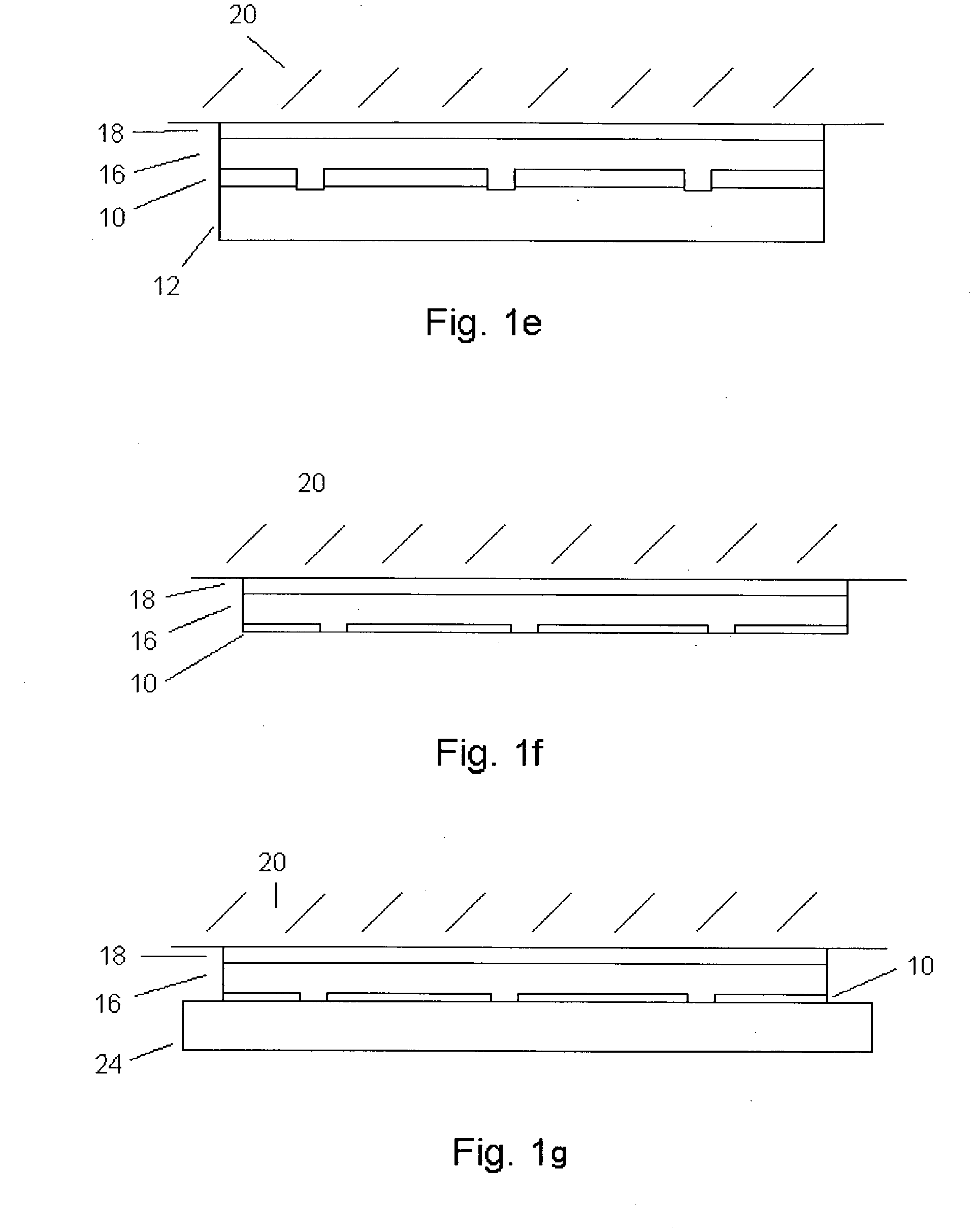Wafer bonding of thinned electronic materials and circuits to high performance substrates
a technology of thin-film electronic materials and substrates, applied in the direction of material nanotechnology, semiconductor devices, semiconductor/solid-state device details, etc., can solve the problems of poor quality factor, poor performance of microwave circuit applications, and loss of microwaves in transmission lines
- Summary
- Abstract
- Description
- Claims
- Application Information
AI Technical Summary
Problems solved by technology
Method used
Image
Examples
Embodiment Construction
[0013] The invention comprises a method of bonding a semiconductor wafer to substrate, specifically a high performance substrate for microelectronic and / or microwave material layers, devices, or circuits. The high performance substrate may provide microelectronic or microwave material layers, devices, or circuits with a microwave insulating, a high thermal conductivity substrate, or both microwave insulating and highly thermally conductive. The high performance substrate may also be optically transparent.
[0014] The approach comprises substantially removing a large portion of the wafer upon which microelectronic or microwave materials, devices, or circuits are fabricated by thinning (optionally with the use of an etch stop layer) and then wafer bonding a high performance substrate (single crystal, polycrystalline, or composite polycrystalline substrate) to the backside of the wafer. The high performance substrate can be either microwave insulating, highly thermally conductive, optica...
PUM
 Login to View More
Login to View More Abstract
Description
Claims
Application Information
 Login to View More
Login to View More - R&D
- Intellectual Property
- Life Sciences
- Materials
- Tech Scout
- Unparalleled Data Quality
- Higher Quality Content
- 60% Fewer Hallucinations
Browse by: Latest US Patents, China's latest patents, Technical Efficacy Thesaurus, Application Domain, Technology Topic, Popular Technical Reports.
© 2025 PatSnap. All rights reserved.Legal|Privacy policy|Modern Slavery Act Transparency Statement|Sitemap|About US| Contact US: help@patsnap.com



